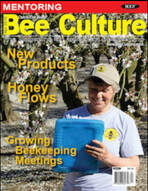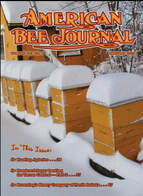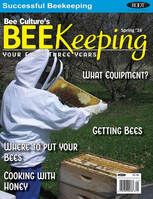|
The Honey Bee Health Coalition has fantastic resource for varroa management. Download the last version of Tools for Varroa Management and more (Check out the Integrated Pest Management spreadsheet tool!) on their website. You can also view the many helpful videos they have produced on YouTube. Why does this matter?
Every honey bee colony in the continental United States and Canada either has Varroa mites today or will have them within several months. Varroa mite infestation represents one of the greatest threats to honey bee health, honey production, and pollination services. When honey bee colonies are untreated or treated ineffectively colonies can fail and beekeepers can incur major economic losses, and, ultimately, agricultural food production may be impacted. In addition, colonies with Varroa are a source of mites that can spread to other colonies, even in other apiaries, through drifting, robbing, and absconding activity of bees. All beekeepers should remain vigilant to detect high Varroa mite levels and be prepared to take timely action in order to reduce mite loads. Effective mite control will reduce colony losses and avoid potential spread of infectious disease among colonies. TVBC members recommend these websites for reading about honeybee research and health:
http://scientificbeekeeping.com https://beeinformed.org https://honeybeehealthcoalition.org The University of Minnesota has free resources on beekeeping specific to northern climates. Their free manual, Beekeeping in Northern Climates, has information for first and second year beekeepers including how to feed, install packages, and troubleshooting problems. You can also download Beekeeping in Northern Climates (Second Edition), the 2016 companion, and first edition manual at beelab.umn.edu/manuals. If you wish to donate to their Bee Lab see the Giving page.
Jodi, from the Department of Agriculture made a presentation to the club in February on honey bee pests and diseases.
Articles on the small hive beetle:
The most thorough and comprehensive review available. This piece is heartily endorsed by the TVBC "Mite Kraut." "This review provides a survey of the current knowledge in the main fields of Varroa research including the biology of the mite, damage to the host, host tolerance, tolerance breeding and Varroa treatment. We first present a general view on the functional morphology and on the biology of the Varroa mite with special emphasis on host–parasite interactions during reproduction of the female mite. The pathology section describes host damage at the individual and colony level including the problem of transmission of secondary infections by the mite. Knowledge of both the biology and the pathology of Varroa mites is essential for understanding possible tolerance mechanisms in the honey bee host. We comment on the few examples of natural tolerance in A. mellifera and evaluate recent approaches to the selection of Varroa tolerant honey bees. Finally, an extensive listing and critical evaluation of chemical and biological methods of Varroa treatments is given."
|
|||||||||||||||||||||||||||||||
|
Mailing Address
Treasure Valley Beekeepers Club PO Box 5066 Boise, Idaho 83705-0066 |
|



